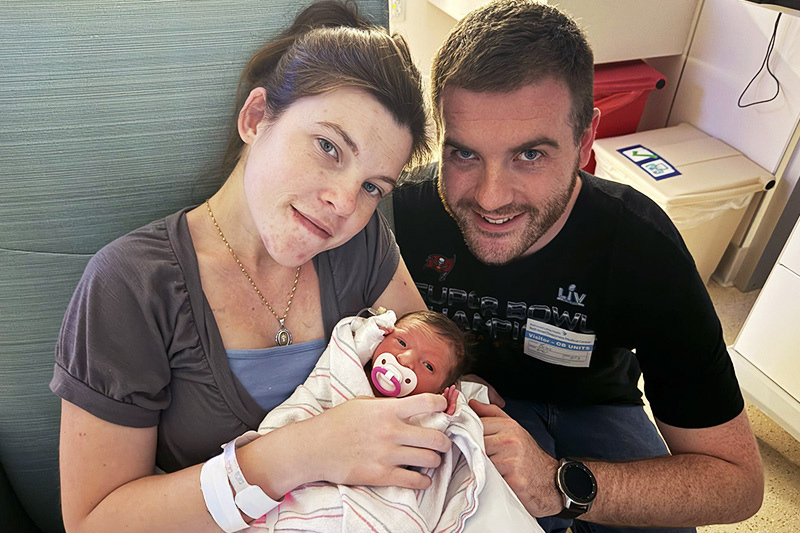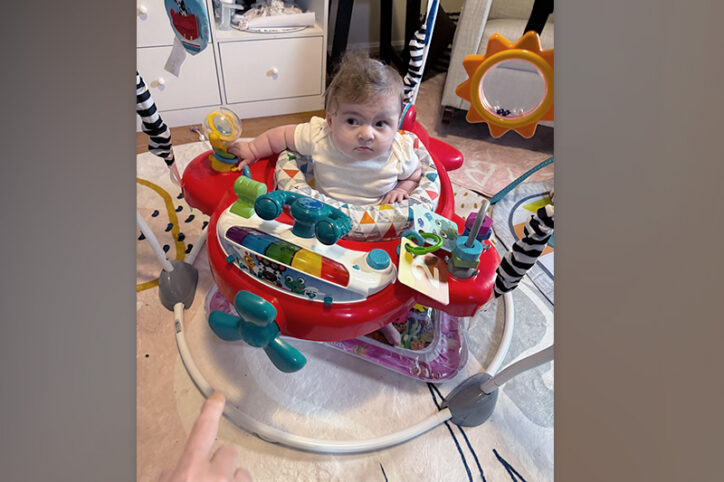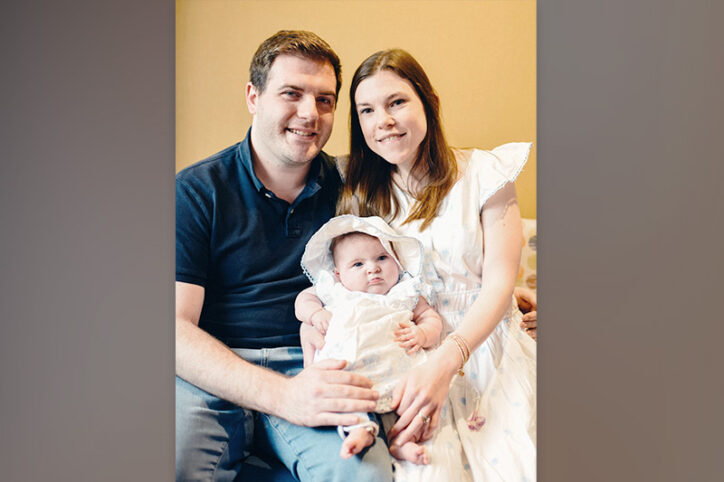Four things you should know about MAPCAs treatment

As the first grandchild in her family, Hannah Homan is in demand for frequent visits. She was also the focus of attention last month when she turned 1.
It’s been happy times for her parents, Amanda and Brian, but they couldn’t see that far ahead early last year. They had received a worrisome heart diagnosis for Hannah before she was born in September 2024: tetralogy of Fallot (ToF) and severe pulmonary valve stenosis, with major aortopulmonary collateral arteries (MAPCAs). The complex condition would put her at risk of lung damage and heart failure.
“We were scared,” Brian says. “We’d like to give other parents hope by sharing Hannah’s story.” Here are four things the Homans have learned about the care and treatment of MAPCAs with ToF.
1. MAPCAs are complex but treatable
When they first received Hannah’s diagnosis, the Homans weren’t aware that there were treatment options.
MAPCAs are abnormal arteries that form out of necessity in utero to bring blood to the lungs when the pulmonary valve is missing or severely narrow — as it was for Hannah. MAPCAs don’t effectively deliver blood after birth, and children who have them usually need treatment in the first few months of life. Worried that they had no options, the family visited Boston Children’s website and learned the hospital’s heart specialists can treat MAPCAs in a surgery known as unifocalization. Boston Children’s is one of the few pediatric hospitals that offer the procedure.
“Boston Children’s gave us the same diagnosis, but they also gave us information about treatment and outcomes. That gave us hope that it could be fixed,” he says.

2. Cardiology therapies can help before surgery
“Hannah looked good when she was born,” Brian recalls. “She was pink and screaming at the top of her lungs. But within several days, she had too much blood going into her lungs.”
Although concerned, the Homans started to feel assured about the path of Hannah’s treatment after one of her cardiologists, Dr. Brian Quinn, stabilized her circulation by placing a pulmonary artery flow restrictor in an enlarged MAPCA.
“That was amazing,” Brian Homan says. “It allowed her to grow and get ready for surgery.”
Advancing MAPCAs treatment
Boston Children’s pulmonary artery reconstruction team has reduced the number of surgeries a child needs for MAPCAs treatment. Read how they’re providing unique individualized care.
But there was one more setback before surgery when a blood clot closed off a section of Hannah’s lungs. After Dr. Quinn put a stent in her underdeveloped pulmonary valve to increase blood flow, she again stabilized — and grew some more.
Hannah got healthy enough to go home for the first time, two days before Christmas. “It was nice to have her home until she went back for surgery,” recalls Amanda.
3. Unifocalization surgery turns MAPCAs into a functional pulmonary artery system
Hannah weighed less than 5 pounds when she was born a month prematurely. Despite growing after her two cardiology interventions, her arteries were smaller than most infants who have the procedure.
Still, her cardiac surgeon, Dr. Peter Chiu, was able to reconfigure her MAPCAs into a functional pulmonary artery system in a unifocalization operation that lasted 16 hours. “That was a very long night,” Brian recalls. “It was stressful, but it went well.”
Hannah had one more surgery on her arteries not long after. “Hannah’s journey was quite a long road, but that second surgery made a huge difference,” Brian says. “She is in a stronger place.”

4. It takes a team of experts to treat MAPCAs
Amanda and Brian are grateful Hannah had a care team focused on MAPCAs treatment. “We were fortunate they have a level of experience that you can’t find at other hospitals,” Brian says. “And they made us a part of the decision-making process, making sure we understood what was going on and answering any questions we had.”
With Hannah’s cardiovascular health vastly improved, she is home again and finally able to spend extended time with her grandparents. But whether she’s traveling to see relatives or is at home, you won’t catch her without a pacifier that has a small moveable bear at its end. “She puts the pacifier into her mouth on her own,” Amanda says. “And she’ll even change the direction of the bear.”
Amanda and Brian also have ample time to see Hannah’s personality developing. “She’s very observant,” says Amanda. “She sees everything.”
Learn more about the Department of Cardiac Surgery or request a Heart Center second opinion.
Related Posts :
-

After surgery for heart condition tetralogy of Fallot, James is all joy
Warriors come in all shapes and sizes. Some even smile. In the Irvine family, the lead warrior is a happy ...
-

Treating MAPCAs with unifocalization surgery and cardiology care
Children born with a rare form of tetralogy of Fallot (ToF) face a challenging type of congenital heart ...
-

Letters from the heart: “Life will be better”
Children with congenital heart disease (CHD) have much to think about as they undergo tests, try medications, and face possible ...
-

Knowing what life is worth: I am an adult heart patient and much more
Most of the children showed off a favorite toy. Some brought items that were meaningful to their family or culture. ...





